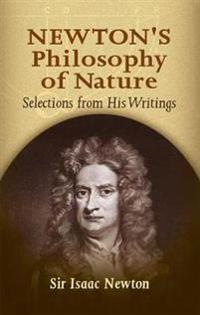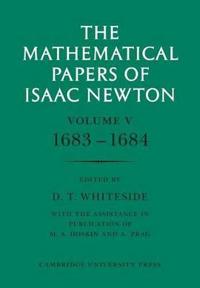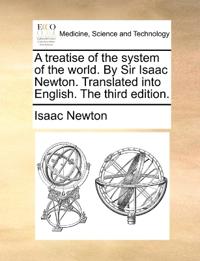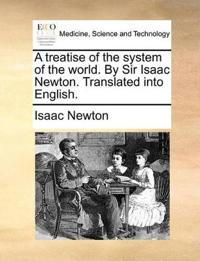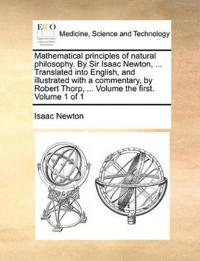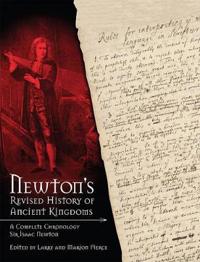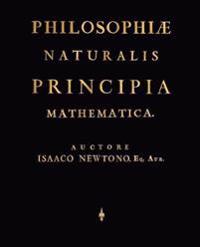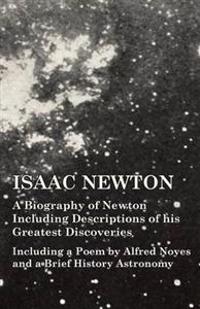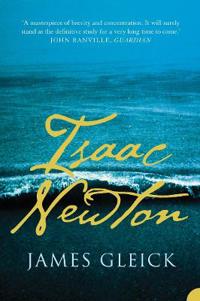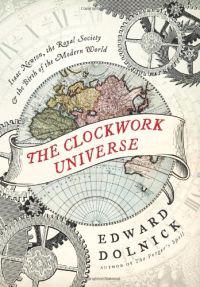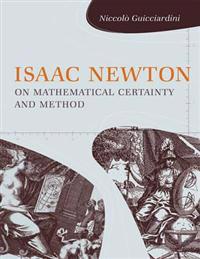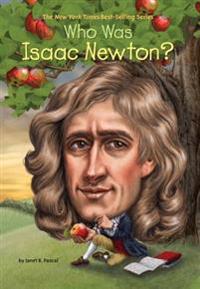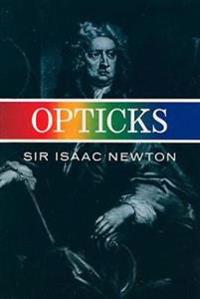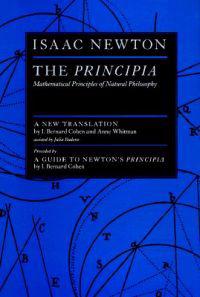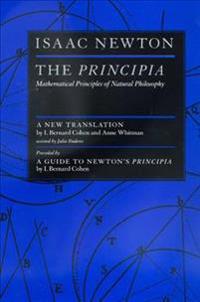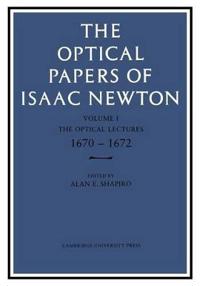Newton's Philosophy of Nature (Häftad)
avSir Isaac Newton
ISBN: 9780486445939 - UTGIVEN: 2005-09Aside from the "Principia and occasional appearances of the "Opticks, Newton' writings have remained largely inaccessible to students of philosophy, science, and literature as well as to other readers. This book provides a remedy with wide representation of the interests, problems, and diverse philo[...]
The Mathematical Papers of Isaac Newton (Pocket)
avIsaac Newton, D. T. (EDT) Whiteside, Isaac Newton
ISBN: 9780521045841 - UTGIVEN: 2009-03The fifth volume of this definitive edition centres around Newton's Lucasian lectures on algebra, purportedly delivered during 1673-83, and subsequently prepared for publication under the title Arithmetica Universalis many years later. Dr Whiteside first reproduces the text of the lectures deposited[...]
A Treatise of the System of the World. by Sir Isaac Newton. Translated Into English. the Third Edition. (Häftad)
avSir Isaac Newton
ISBN: 9781140974956 - UTGIVEN: 2010-05A Treatise of the System of the World. by Sir Isaac Newton. Translated Into English. (Häftad)
avSir Isaac Newton
ISBN: 9781170421970 - UTGIVEN: 2010-05Four Letters from Sir Isaac Newton to Doctor Bentley. Containing Some Arguments in Proof of a Deity. (Häftad)
avSir Isaac Newton
ISBN: 9781170671115 - UTGIVEN: 2010-06Newton's Revised History of Ancient Kingdoms: A Complete Chronology (Inbunden)
avIsaac Newton, Larry Pierce
ISBN: 9780890515563 - UTGIVEN: 2009-02Philosophi] Naturalis Principia Mathematica (Latin Edition) (Häftad)
avNewtono Isaaco Newtono, Newton Isaac Newton
ISBN: 9781603863797 - UTGIVEN: 2010-08Isaac the Alchemist: Secrets of Isaac Newton, Reveal'd
ISBN: 9780763670634 - UTGIVEN: 2017-02A surprising true story of Isaac Newton's boyhood suggests an intellectual development owing as much to magic as science.
Before Isaac Newton became the father of physics, an accomplished mathematician, or a leader of the scientific revolution, he was a boy living in an apothecary's house, obser[...]Isaac the Alchemist: Secrets of Isaac Newton, Reveal'd (häftad)
ISBN: 9781536203639 - UTGIVEN: 2018-09Isaac Newton (Häftad)
avJames Gleick
ISBN: 9780007163182 - UTGIVEN: 200406From one of the best writers on science, a remarkable portrait of Isaac Newton. The man who changed our understanding of the universe, of science, and of faith.[...]
The Clockwork Universe: Isaac Newton, the Royal Society, and the Birth of the Modern World (Inbunden)
avEdward Dolnick
ISBN: 9780061719516 - UTGIVEN: 2011-02The Clockwork Universe is the story of a band of menwho lived in a world of dirt and disease but pictured auniverse that ran like a perfect machine. A meld ofhistory and science, this book is a group portrait ofsome of the greatest minds who ever lived as theywrestled with nature's most sweeping mys[...]
The Clockwork Universe: Isaac Newton, the Royal Society, and the Birth of the Modern World (Häftad)
avEdward Dolnick
ISBN: 9780061719523 - UTGIVEN: 2012-02In a world of chaos and disease, one group of driven, idiosyncratic geniuses envisioned a universe that ran like clockwork. They were the Royal Society, the men who made the modern world. At the end of the seventeenth century, sickness was divine punishment, astronomy and astrology were indistinguis[...]
Isaac Newton (häftad)
ISBN: 9780142408209 - UTGIVEN: 2008-10Here is a man with an imagination so large that just ?by thinking on it, ? he invented calculus and figured out the scientific explanation of gravity. Kathleen Krull presents a portrait of Isaac Newton that will challenge your beliefs about a genius whose amazing discoveries changed the world[...]
Isaac Newton (Inbunden)
avA.Rupert Hall
ISBN: 9780198503644 - UTGIVEN: 1998-12This new work by one of this century's most eminent Newtonian scholars - Rupert Hall - brings together for the first time the early eighteenth century biographical notices of Sir Isaac Newton. The centrepiece of the book is a brand new translation of Paolo Frisi's biography, the first published on N[...]
Isaac Newton on Mathematical Certainty and Method (Övrig)
avNiccolo Guicciardini
ISBN: 9780262013178 - UTGIVEN: 2009-10-02Historians of mathematics have devoted considerable attention to Isaac Newton's work on algebra, series, fluxions, quadratures, and geometry. In Isaac Newton on Mathematical Certainty and Method, Niccolo Guicciardini examines a critical aspect of Newton's work that has not been tightly connected to [...]
Isaac Newton on Mathematical Certainty and Method (Häftad)
avNiccolo Guicciardini
ISBN: 9780262516488 - UTGIVEN: 201108Historians of mathematics have devoted considerable attention to Isaac Newton's work on algebra, series, fluxions, quadratures, and geometry. In Isaac Newton on Mathematical Certainty and Method, Niccolo Guicciardini examines a critical aspect of Newton's work that has not been tightly connected to [...]
Who Was Isaac Newton? (Pocket)
avJanet B. Pascal, Tim (ILT) Foley, Janet B. Pascal
ISBN: 9780448479132 - UTGIVEN: 2014-10Isaac Newton was always a loner, preferring to spend his time contemplating the mysteries of the universe. When the plague broke out in London in 1665 he was forced to return home from college. It was during this period of so much death, that Newton gave life to some of the most important theories i[...]
Opticks (Häftad)
avSir Isaac Newton
ISBN: 9780486602059 - UTGIVEN: 195206One of the most readable of all the great classics of physical science, "Opticks" presents a comprehensive survey of 18th-century knowledge of light. Newton describes his experiments with spectroscopy, colors, lenses, reflection, refraction, and more, in language lay readers can easily follow. Based[...]
The Principia (Inbunden)
avSir Isaac Newton
ISBN: 9780520088160 - UTGIVEN: 199910In his monumental 1687 work "Philosophiae Naturalis Principia Mathematica", known familiarly as "The Principia", Isaac Newton laid out in mathematical terms the principles of time, force, and motion that have guided the development of modern physical science. Even after more than three centuries and[...]
The Principia (Häftad)
avSir Isaac Newton
ISBN: 9780520088177 - UTGIVEN: 199910In his monumental 1687 work "Philosophiae Naturalis Principia Mathematica", known familiarly as the "Principia", Isaac Newton laid out in mathematical terms the principles of time, force, and motion that have guided the development of modern physical science. Even after more than three centuries and[...]
The Mathematical Papers of Isaac Newton
ISBN: 9780521045858 - UTGIVEN: 2008-02This volume reproduces mathematically significant extracts from the extant manuscript record of Newton's researches during 1684-5 into the dynamical motion of bodies under the deviating action of a central force, and his subsequent struggles thereby to explain the observed motions of solar comets an[...]
The Optical Papers of Isaac Newton
ISBN: 9780521155090 - UTGIVEN: 2012-01The first volume of a three-volume complete edition of Newton's optical papers contains his Optical Lectures, delivered at Cambridge University between 1670 and 1672. The Lectures is Newton's first major scientific treatise, and consequently it represents a crucial link between his early years of di[...]

